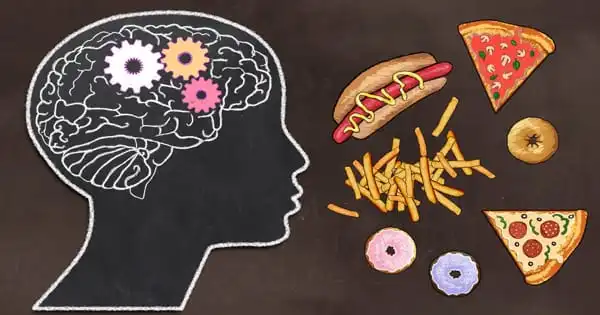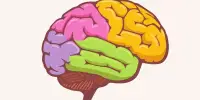The most frequent eating disorder is binge eating disorder (BED). There is hope because it is highly curable. Binge eating can be used to cope with life’s challenges, such as stress and trauma. It does not imply that you are weak or failing in any manner. Know that you are not alone if you suffer from a binge eating disorder. Binge eating disorders (BED) is the most frequent type of eating problem. One in every five women and one in every seven men suffers from an eating disorder. By the age of 40, you’ve become a reliable source. BED is extremely curable, and learning new coping mechanisms is one of the first stages toward recovery.
According to a new study, brain scans of children ages 9-10 with an eating problem that causes compulsive overeating revealed changes in gray matter density compared to their unaffected classmates.
The findings of the study show that aberrant development in the brain’s reward and inhibitory areas may play a role. Researchers discovered increases in gray matter density in areas of the brain that are generally ‘pruned’ during healthy brain development in children with binge eating disorder. Synaptic pruning disruption has been connected to a variety of psychiatric illnesses.
Binge eating disorder, which affects roughly 3-5 percent of the population in the United States, is defined by repeated episodes of eating huge amounts of food and a perception of having no control over the behavior. The findings of the study show that aberrant development in the brain’s reward and inhibitory areas may play a role. The study, which was recently published in the journal Psychiatry Research, is now available online.
In children with binge eating disorder, we see abnormality in brain development in brain regions specifically linked to reward and impulsivity, or the ability to inhibit reward. The findings of the study show that aberrant development in the brain’s reward and inhibitory areas may play a role.
Stuart Murray
“In children with binge eating disorder, we see the abnormality in brain development in brain regions specifically linked to reward and impulsivity, or the ability to inhibit reward,” said lead author Stuart Murray, Della Martin Associate Professor of Psychiatry and the Behavioral Sciences at USC’s Keck School of Medicine, where he also serves as director of the Eating Disorders Program.
“These children have extremely high reward sensitivity, particularly to calorically dense, high-sugar diets. The findings demonstrate that this is not due to a lack of discipline on the part of these children.”
Pandemic saw increase in eating disorders among young people
According to experts, eating disorders in young people skyrocketed during the epidemic, as did hospitalizations. Anorexia, muscle dysmorphia, and binge eating were all increased by social isolation, stress, disturbance of routine, and a social media-fueled search for perfection.
Obesity, metabolic syndrome, poor heart function, and suicidal thoughts are all risks associated with binge eating disorder. Treatment goals include minimizing the frequency of binge eating episodes by eliminating “trigger” foods and addressing underlying anxiety or despair. According to Murray, medicine and talk therapy are only helpful around half of the time.

Murray and his colleagues studied brain scans and other data from 71 children with binge eating disorder and 74 children without binge eating disorder as part of the Adolescent Brain and Cognitive Development Study, a large longitudinal study. This study includes data from 11,875 children aged 9 to 10 who were recruited from 21 sites across the United States between 2016 and 2018.
They discovered increases in gray matter density in areas of the brain that are normally “pruned” during healthy brain development in children with binge eating disorder. Synaptic pruning, a developmental stage that occurs between the ages of 2 and 10, destroys no longer needed synapses, making the brain more efficient. Synaptic pruning disruption has been connected to a variety of psychiatric illnesses.
“This work says to me that binge eating disorder is programmed in the brain, even from a very, very young age,” Murray said. “The unknown, which we will address in due course, is whether successful treatment of binge eating disorder in children aids in the correction of brain development. Almost all psychiatric illnesses have a better prognosis if they are treated in childhood.”
While there is scientific evidence that some persons with BED exhibit characteristics of addictive behavior, eating is not something that can be stopped cold turkey. After all, we must eat in order to survive. One of the most difficult components is learning to live with the source of the distress. Making peace with your connection with food is essential for all types of disordered eating. Treatment can assist you in accomplishing this. Dealing with BED symptoms can be crippling, but there are options available to assist you in healing and learning to eat without stress and shame.
















